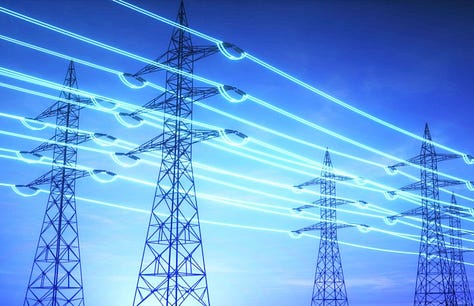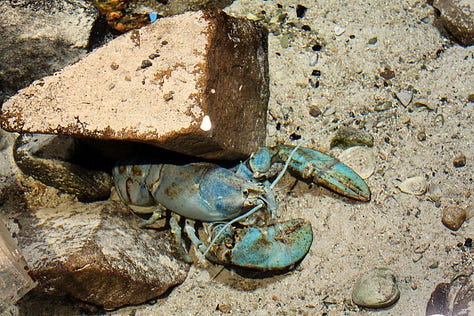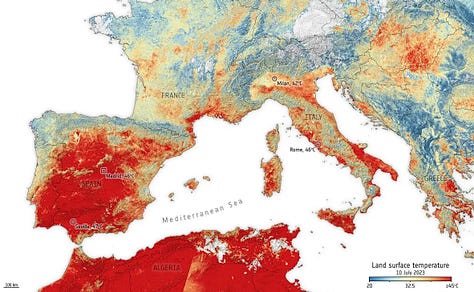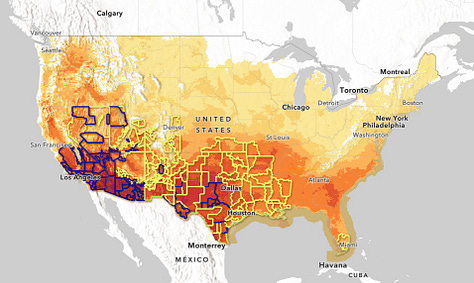Green Lights July 21: Top stories this week
Don't miss a single story: The best from Callaway Climate Insights






. . . . Welcome to Green Lights, our weekly roundup of the best of Callaway Climate Insights. This week, everyone is still talking about high temperatures because everyone loves to talk about the weather even though they can’t do anything about… wait. We can do something about it. Lots of things. Read about the coming climate leadership crisis in Europe, carbon capture deals on Wall Street, “advanced reconductoring,” electric vehicles, and lobsters and offshore wind platforms. Here are the highlights in a simple and convenient format that makes it easy for our readers. It’s also easy to subscribe.
. . . . David Callaway writes from London about Thursday’s climate shocker in Europe: EU climate envoy Frans Timmermans said he plans to run for prime minister in his home country, the Netherlands, whose government just collapsed. Who will be his successor in the EC? Without strong leadership from Europe, the U.S., and China, global climate cooperation could disintegrate just as the effects of climate change are starting to bite around the globe this summer.

. . . . One of the tools investment analysts have come up with to measure a company’s contributions to climate change is Implied Temperature Rise (ITR), which supposedly calculates how closely a company or entity’s emissions are in keeping with the goals of the Paris Accord. But Mark Hulbert’s deep dive into ITR reveals it’s plagued by inconsistencies that render it as bad — or worse — than the hodgepodge of ESG data now out there.
. . . . Extreme heat and other climate-related hazards in real time: The above map shows how many Americans (more than 100 million) have been under extreme heat warnings, and where, in the past 30 days. The tool that created this map — the Climate Mapping for Resilience and Adaptation website at resilience.climate.gov — also can map active wildfires, drought, and inland and coastal flooding. The highest temperature recorded in the contiguous U.S. on Sunday was 129°F., just south of Death Valley, Calif. On Monday, the heat index reached 152°F. at the Persian Gulf International Airport in Iran. And the Gulf waters reached 90°F. Back on Wall Street, things are heating up, too. In less than a week, we’ve seen two massive deals in the carbon capture and storage sector.
. . . . One of the recurring themes surrounding the U.S.’s transition to renewables is how all this new green power is going to be distributed. But what if we could use the same power towers but string new and more efficient cables between them?, Matthew Diebel asks.
. . . . Is the Cybertruck for real? And are Tesla shares now an interest rate play? David Callaway looks at whether Tesla shares, like the financials, and perhaps the utilities, are going to be the early signs that the rough couple of years of rate rises might be coming to an end.
. . . . In his climate insights column this week, Matthew Diebel explains why lobsters apparently like offshore wind platforms and where dynamic electricity pricing is gaining power.
More greenery . . . .
It’s a start: House Republicans propose planting a trillion trees as they move (a tiny bit) away from climate change denial
Baked Alaska: Extreme heat is warming the state, and creating national security problems
What lies beneath: ‘Underground climate change’ is deforming the ground beneath buildings, study finds
Climate change on the menu: disappearing salmon, dying chickens and smoky wines
116 degrees at night: Death Valley’s extreme heat goes off the charts from climate change
From San Francisco, with love: Tony Bennett, a star for the ages, dies at 96






